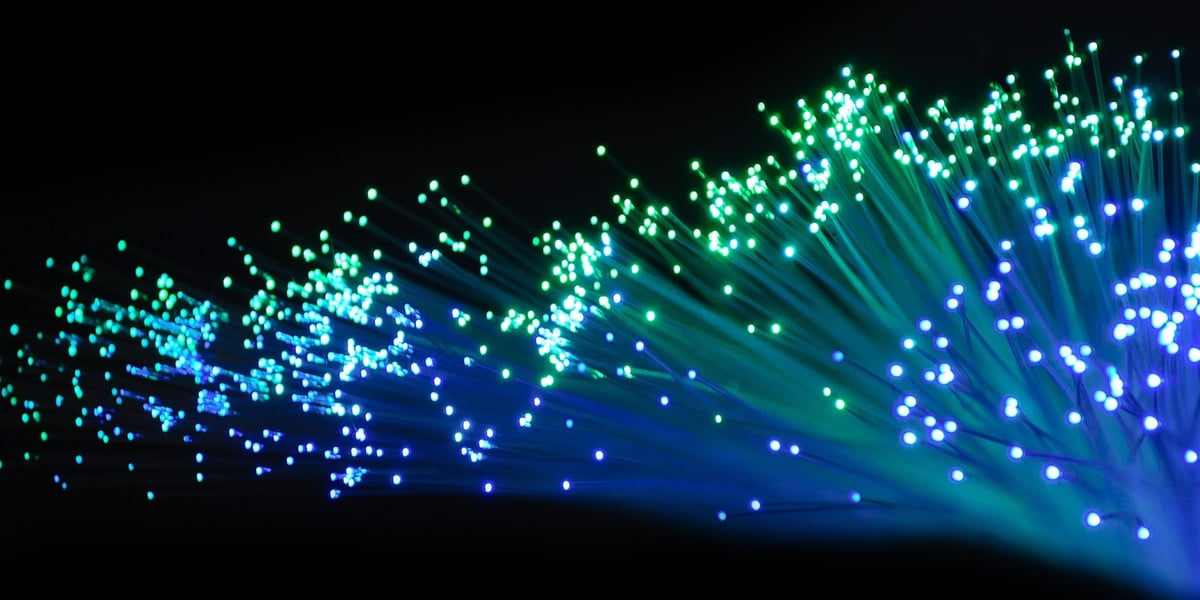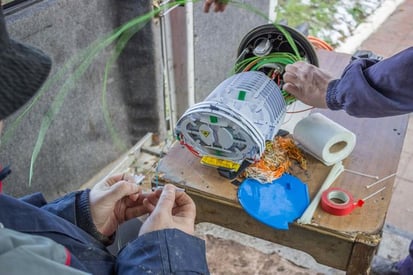
How fiber optics work: getting down to fiber basics
If you're curious about how fiber optics work, read on. This post will cover how optically pure glass strands are used to transmit information as light.
Learning how fiber optics work
To those of us who are perhaps less familiar with the practical applications of communicating with light, it can seem almost like magic how fiber optics work. Pictures, videos, emails, phone calls, and more, traveling through glass fibers as thin as human hair, all at the speed of light. Fiber optics technology is a marvel of human ingenuity, not to mention physics and design, and with it comes high-capacity digital communications for a modern age.
Historically, copper was used to wire homes to telecommunications networks, mostly for the use of telephones. In many ways, copper was suited for voice signal. However, with the advent of the internet, copper's time had come. As with all major technological shifts though, especially when there's infrastructure involved, the change doesn't happen overnight. Fiber is the infrastructure that will meet our massive and growing digital needs.
If you're curious about how fiber optics work on a smaller scale (with big implications), read on. This post will cover how optically pure glass strands are used to transmit information as light as compared with copper, which transmits information as electrical signals.
Total internal reflection
Optical fibers allow transmission over longer distances and higher data rates than traditional wire cables. Light travels along fiber much more efficiently and at exponentially higher speeds than signals on copper. The result is near-instant information transfer even over long distances and greatly increased bandwidth. In other words, crystal-clear voice and video calls, incredible high-resolution TV, and all that other good internet stuff.
Here's a simple way to understand the basic principle of how fiber optics work. Imagine you're shining a flashlight down a long, dark, and straight hallway. The light will make it to the other end. But what if the hallway isn't straight? What if it bends or curves? How could you get the light to the other end?

If you pictured lining the hallway with mirrors and bouncing the light to the other end of the hallway, you're on your way to understanding total internal reflection.
Fiber strands are arranged in bundles called optical cables and are used to transmit light. Optical cables have three main parts. The core is the thin glass center where light travels. Cladding is an outer material that surrounds the core and reflects light back into the core. Basically, there's nowhere for light to go except to stay inside the glass fiber. Light can travel long distances along fiber strands because the cladding doesn't absorb light from the fiber core. Finally, a buffer coating wraps around the cladding and the core to protect the fiber.
Communicating with light

Communicating with light takes place over four steps. First, an optical signal is created using a transmitter. The transmitter takes electrical signals and creates and encodes them into light signals. Next, the light signals are relayed along fiber strands. When fiber reaches its destination, it is received and decoded back into an electrical signal, making up the stuff of your favorite shows on Netflix, the top songs on Spotify and whatever's up next in your YouTube queue.
Okay, but what about cellular?
Today, fiber to the home is a more cost-effective, efficient, and long-term solution than copper wire in terms of distance, demand, and signal quality.
Here's where you might be wondering about wireless broadband or 4=5G used in cellular data and its ability to transmit information. Cellular waves are transmitted on frequencies between 700 MHz and 1900 MHz for long distances and solid coverage.
You probably use cellular now and then when you're away from a Wi-Fi network and in a pinch for an internet connection on your smartphone. All that cellular has to come from somewhere, and 4G radio waves degrade over long distances.
A combination of fiber and wireless is what makes the impact of fiber networks so incredible. Wi-Fi radio waves are broadcast on higher frequencies, 2.4 GHz and 5 GHz, for faster speeds. Once the fiber reaches a home or business, people can plug in a standard router or use their existing business infrastructure; there's no need, necessarily, to upgrade anything else.
The speed of light, in your community
Investment in fiber networks and fiber infrastructure can light up communities and provide better wireless services. For example, the Ting Internet fiber network in Charlottesville, VA provides Wi-Fi for the entire Downtown Mall. That means people can hop on the Wi-Fi and get connected to a fast network away from home while they're out shopping, sightseeing, or grabbing a bite to eat.

Because the Downtown Mall is wired with fiber, this Wi-Fi network isn't subject to the usually shared Wi-Fi issues of overcrowding resulting in a slow connection. It's backed up with Ting Internet's incredibly-fast fiber network so there's plenty of bandwidth to go around.
.png?length=710&name=SMB%20Blog%20banner%20(5).png)

.png?length=710&name=Blog%20banners%20(12).png)